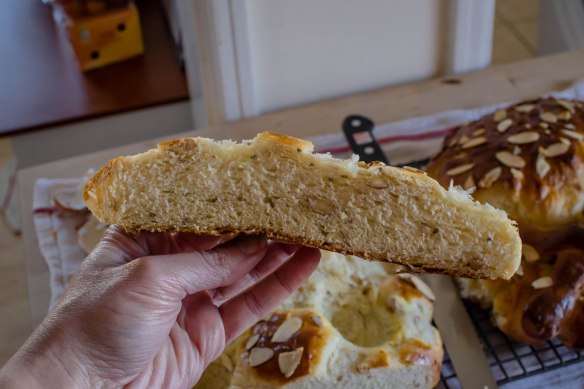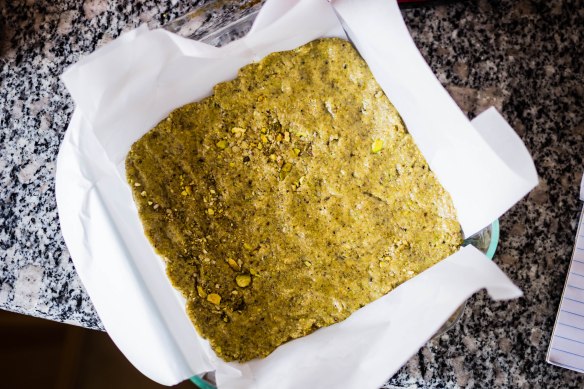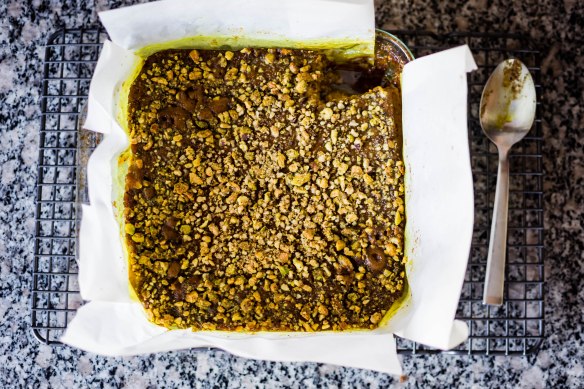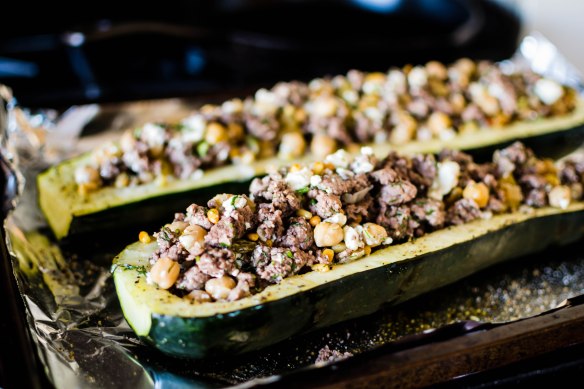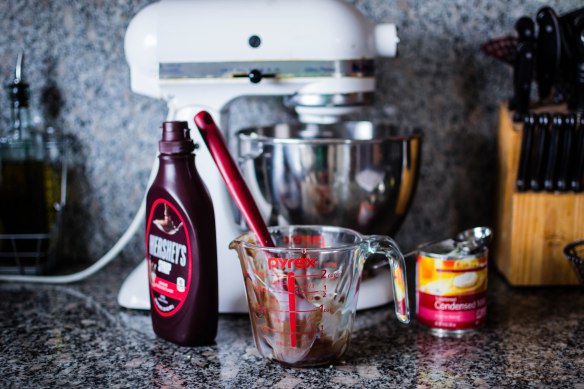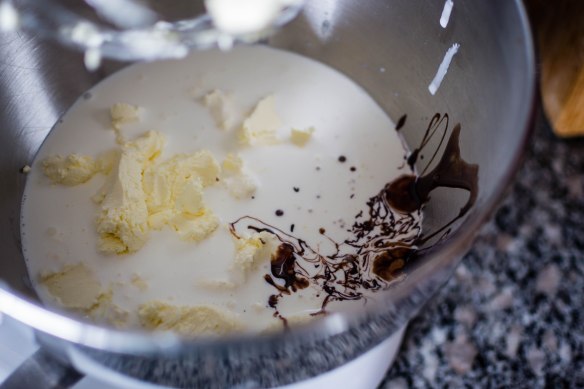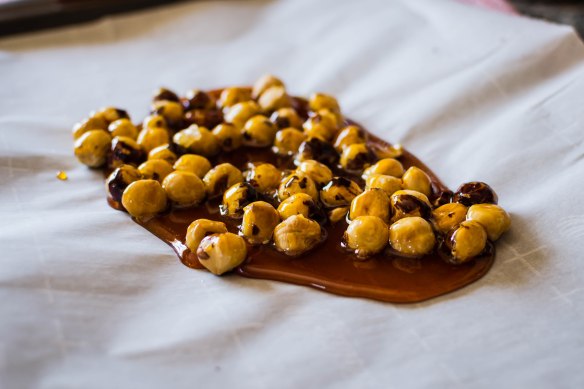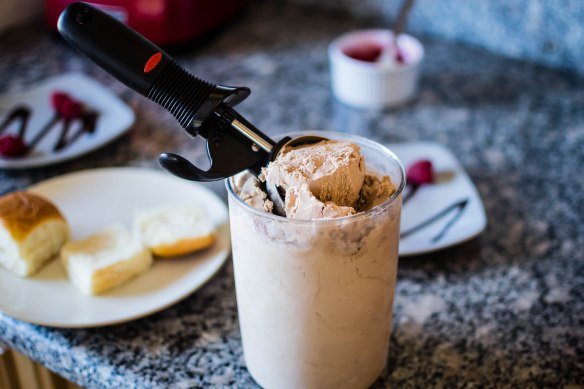 It’s rare for me to be organized enough to produce a holiday dish sufficiently in advance of the actual holiday that you, my readers, could – gasp – make the dish for the holiday if you so desired. And yet here, for once, I’ve managed it. Purim is at the end of this week, an important holiday in the Jewish calendar, which celebrates the overthrow of the evil Haman. Royal advisor to the King of Persia, Haman planned to slaughter the Jews, and was thwarted by Esther, the queen, and her cousin Mordecai.
It’s rare for me to be organized enough to produce a holiday dish sufficiently in advance of the actual holiday that you, my readers, could – gasp – make the dish for the holiday if you so desired. And yet here, for once, I’ve managed it. Purim is at the end of this week, an important holiday in the Jewish calendar, which celebrates the overthrow of the evil Haman. Royal advisor to the King of Persia, Haman planned to slaughter the Jews, and was thwarted by Esther, the queen, and her cousin Mordecai.
 Purim is celebrated with feasting and can be, by all accounts, quite raucous. My friend M. relates childhood memories of delivering and receiving Purim baskets to and from family and friends, akin to an Easter basket, but more likely to be filled with hamantaschen and preserves than with chocolates and egg-shaped candies. In the Talmud, M. says, Jews are instructed to make themselves “so fragrant with wine” that they can’t tell the difference between “wicked is Haman” and “blessed is Mordecai.” This intensity of celebration sometimes produced dangerous results, as people would fall over at Temple (or right into the fire, per M). Other Purim traditions include retelling the whole story (the “Purim Spiel”), and using noisemakers to drown out Haman’s name every time it is uttered, which sounds like excellent fun.
Purim is celebrated with feasting and can be, by all accounts, quite raucous. My friend M. relates childhood memories of delivering and receiving Purim baskets to and from family and friends, akin to an Easter basket, but more likely to be filled with hamantaschen and preserves than with chocolates and egg-shaped candies. In the Talmud, M. says, Jews are instructed to make themselves “so fragrant with wine” that they can’t tell the difference between “wicked is Haman” and “blessed is Mordecai.” This intensity of celebration sometimes produced dangerous results, as people would fall over at Temple (or right into the fire, per M). Other Purim traditions include retelling the whole story (the “Purim Spiel”), and using noisemakers to drown out Haman’s name every time it is uttered, which sounds like excellent fun.

 The most common food related to the holiday is hamantaschen, the delicious triangular cookie with sweet filling, which I’ve seen translated both as “Haman’s pocket” and as “Haman’s ears.” Deb at Smitten Kitchen has a new one, and Jake Cohen has opinions about the filling. Kreplach, a savory dumpling, is another popular option.
The most common food related to the holiday is hamantaschen, the delicious triangular cookie with sweet filling, which I’ve seen translated both as “Haman’s pocket” and as “Haman’s ears.” Deb at Smitten Kitchen has a new one, and Jake Cohen has opinions about the filling. Kreplach, a savory dumpling, is another popular option.
 Neither of these is bread, of course, but while I was poking around that weird neighborhood “the internet,” I came across two possibilities for this year’s project. Keylitsh, according to the blog Poppy and Prune, is an elaborately braided Eastern European challah served for numerous holidays. At Purim, the fancy braids are symbolic of the rope used to hang Haman. I am well versed in the three-strand challah I learned from my mom, and I’ve tried a six-strand once that went… poorly… so I kept going.
Neither of these is bread, of course, but while I was poking around that weird neighborhood “the internet,” I came across two possibilities for this year’s project. Keylitsh, according to the blog Poppy and Prune, is an elaborately braided Eastern European challah served for numerous holidays. At Purim, the fancy braids are symbolic of the rope used to hang Haman. I am well versed in the three-strand challah I learned from my mom, and I’ve tried a six-strand once that went… poorly… so I kept going.
Poppy and Prune goes on to say:
If that’s not enough gore for your Purim table, I have just the thing for you: a traditional Moroccan bread known as boyoja ungola di Purim or ojos de Haman. This is a round, flattish loaf decorated with two hard boiled eggs in their shells, which are meant to represent Haman’s eyes. Each egg is held down with two thin strips of dough arranged in an x, and, once the bread is baked, it’s a traditional to rip them out of the loaf—you know, like ripping Haman’s eyes out. The dough for this bread is traditionally studded with anise and sesame seeds, as well as coarsely chopped almonds.
This sounded promising, and delightful, so I set about finding more information and a recipe that incorporated these flavorings. Kosher Cowboy offers a story about the symbolism of this bread, though I’m unclear on his source.
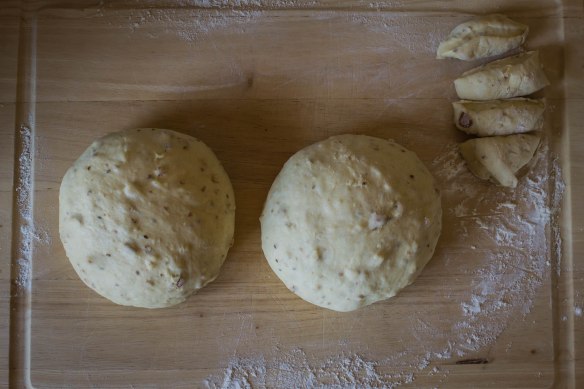
 Some incarnations of this bread don’t stop at the eyes, but decorate the loaf to look like a magnificently evil head, complete with a long beard darkened by poppyseeds and round cheeks that puff up during baking. Mine, as you can see, were not that elaborate, although I appreciate that where the dough tore slightly below the eye crosses it left a pale stripe, then a darker, browned lower half that could, if you squint a bit, be seen as a thick beard.
Some incarnations of this bread don’t stop at the eyes, but decorate the loaf to look like a magnificently evil head, complete with a long beard darkened by poppyseeds and round cheeks that puff up during baking. Mine, as you can see, were not that elaborate, although I appreciate that where the dough tore slightly below the eye crosses it left a pale stripe, then a darker, browned lower half that could, if you squint a bit, be seen as a thick beard.

 Many of the recipes and traditions of this loaf come courtesy of Maggie Glezer’s A Blessing of Bread and Phyllis and Miriyam Glazer’s The Essential Book of Jewish Festival Cooking, both of which look like beautiful books that might end up on my already-overpacked cookbook shelves…
Many of the recipes and traditions of this loaf come courtesy of Maggie Glezer’s A Blessing of Bread and Phyllis and Miriyam Glazer’s The Essential Book of Jewish Festival Cooking, both of which look like beautiful books that might end up on my already-overpacked cookbook shelves…
 The best part about this bread, besides eating it, is the shaping. It’s a lovely dough to work with, as are most enriched doughs, elastic and puffy. After lightly flattening and scoring the main ball, you get to poke in two divots, insert a hard boiled egg* into each, and add two pieces of dough in an X shape across the eggs and pressed into the main loaf, where they hold the eggs in place during baking. If you’re going the fancy route, you can use additional pieces of dough to make Haman’s facial features or, if you’re keeping it comparatively simple, as I did, you can just snip around the edge of each loaf at one inch intervals with scissors, which makes a lovely pattern like sunflower petals or, I suppose, like thick locks of Haman’s beard and hair.
The best part about this bread, besides eating it, is the shaping. It’s a lovely dough to work with, as are most enriched doughs, elastic and puffy. After lightly flattening and scoring the main ball, you get to poke in two divots, insert a hard boiled egg* into each, and add two pieces of dough in an X shape across the eggs and pressed into the main loaf, where they hold the eggs in place during baking. If you’re going the fancy route, you can use additional pieces of dough to make Haman’s facial features or, if you’re keeping it comparatively simple, as I did, you can just snip around the edge of each loaf at one inch intervals with scissors, which makes a lovely pattern like sunflower petals or, I suppose, like thick locks of Haman’s beard and hair.


 As expected, in addition to being a lovely dough and a gorgeous loaf – deeply golden brown, shiny from egg wash, and scattered with sliced almonds – it is also delicious. We found it slightly sweeter and also less eggy than the challah my family makes, and the nuts and seeds were a lovely addition. I wasn’t sure how I would feel about chopped almonds inside, but I found I loved the added texture. I tend to avoid anise and anise-flavored things, but here it’s such a small amount it isn’t overpowering, and I found it reminded me slightly of a good, traditional biscotti (in flavor alone, though – the texture of this bread is much lighter and softer). Oh, and peeling back the X of dough to gouge out the hard-boiled egg “eye” on either side is, as you can imagine, also a delight.
As expected, in addition to being a lovely dough and a gorgeous loaf – deeply golden brown, shiny from egg wash, and scattered with sliced almonds – it is also delicious. We found it slightly sweeter and also less eggy than the challah my family makes, and the nuts and seeds were a lovely addition. I wasn’t sure how I would feel about chopped almonds inside, but I found I loved the added texture. I tend to avoid anise and anise-flavored things, but here it’s such a small amount it isn’t overpowering, and I found it reminded me slightly of a good, traditional biscotti (in flavor alone, though – the texture of this bread is much lighter and softer). Oh, and peeling back the X of dough to gouge out the hard-boiled egg “eye” on either side is, as you can imagine, also a delight.

 Because Purim involves exuberant eating and drinking, many of the recipes I found for this bread, which is essentially an unbraided challah with added flavoring agents, make a LOT. I’m talking, 8 cups of flour, 3-4 loaves a lot, or even more: some recipes offer the more modest quantities for 3-4 loaves, and then provide instructions for a full 5 pounds of flour. I scaled mine back a little bit to just 2 loaves, one of which, eyeballs already extracted, is sitting happily in our freezer waiting for a weekend when we want something more celebratory than my standard sourdough toast.
Because Purim involves exuberant eating and drinking, many of the recipes I found for this bread, which is essentially an unbraided challah with added flavoring agents, make a LOT. I’m talking, 8 cups of flour, 3-4 loaves a lot, or even more: some recipes offer the more modest quantities for 3-4 loaves, and then provide instructions for a full 5 pounds of flour. I scaled mine back a little bit to just 2 loaves, one of which, eyeballs already extracted, is sitting happily in our freezer waiting for a weekend when we want something more celebratory than my standard sourdough toast.
* thanks to careless proofreading on a recent Whole Foods order, I ended up with a package of medium – rather than the grocery standard large – sized eggs. I used these smaller ones to make Haman’s hard-boiled eyes and was pleased with the results. Large eggs would work too, but depending on the size of your loaf they might be a tight squeeze to fit in.
Ojos de Haman
Adapted from Phyllis Glazer’s recipe at The Times of Israel, and shaping instructions from STL Jewish Light
Makes 2 loaves
3½-4 hours
5 1/3 cups all-purpose flour
1 TB + 1tsp active dry yeast
2/3 cups granulated sugar
2 tsp sesame seeds
2 tsp anise or fennel seeds
2/3 cups coarsely chopped almonds
½ tsp salt
2 large eggs
1/3 cup vegetable oil
1½ cups warm water
4 hard boiled eggs (I used medium eggs because I happened to have some and found they fit well. Large eggs would work too, but might be a tight squeeze on Haman’s face)
1 yolk + 1 tsp water, to glaze
2 TB sliced almonds
- In a large bowl or the bowl of your stand mixer, combine the flour, yeast, sugar, sesame seeds, anise or fennel seeds, and chopped almonds. Whisk or mix to combine with the dough hook. Once well combined, add the salt and whisk in.
- In a smaller bowl or a large glass measuring cup, stir together the eggs, oil, and warm water. Make a well in the flour mixture and pour in the wet ingredients. If you’re working with a stand mixer, knead with the dough hook on medium speed into a soft, slightly sticky dough: about 7-8 minutes. If you aren’t using a stand mixer, first stir the wet ingredients into the dry with a wooden spoon or a sturdy spatula, then turn out onto a floured board and knead by hand until soft and smooth: about 8-10 minutes.
- Let the dough rise, covered with plastic wrap or a clean towel, until doubled: 1 – 1½ hours. Meanwhile, hard boil the eggs: bring a small pot of water to a rolling boil, then use a spoon to gently add the eggs. For large eggs, boil 10 minutes and then remove eggs and set aside to cool. For medium eggs, boil 8 minutes and then remove and set aside to cool. Remember: the eggs will bake along with the bread.
- Once the dough has doubled in size, turn it out onto a lightly floured board and remove a piece the size of a small fist. Cut this into four pieces, then roll each into a thin strand about 6 inches in length. Cut each thin strand in half: these are for your Xs to hold in the egg “eyes.”
- Divide the remaining dough in half. Working with one half at a time, roll into a ball, then use a rolling pin or floured hands to flatten into a disk 8-9 inches in diameter. With a razor blade or a sharp knife, slice a shallow crosshatch pattern into the surface of the dough.
- Using your thumb or the knuckle of your index finger, firmly press two indentations into the dough about two inches apart in the top third of the disk. Place one cooled hard-boiled egg into each indentation. Use your reserved strips of dough to make an X shape across each “eyeball,” pressing firmly into the rest of the loaf to adhere, as in the photos above. Transfer to a baking tray lined with parchment paper. With scissors or a sharp knife, snip around the edge of the loaf at 1-inch intervals to create a petal pattern. Repeat with remaining loaf.
- Let the shaped loaves rise, covered with a clean kitchen towel, for 30 minutes. Meanwhile, preheat the oven to 350F.
- After 30 minutes, combine the egg yolk and 1 tsp water in a small bowl. Remove the kitchen towel and glaze the loaves with this egg wash, trying to avoid the hard-boiled eggs as much as possible. Scatter or press on the sliced almonds, then bake in the preheated 350F oven for 20-25 minutes, until they are deeply browned.
- Cool at least 15-20 minutes before eating. We started by peeling off the X of dough to pluck out Haman’s eye, but you should proceed as desired. Enjoy!

